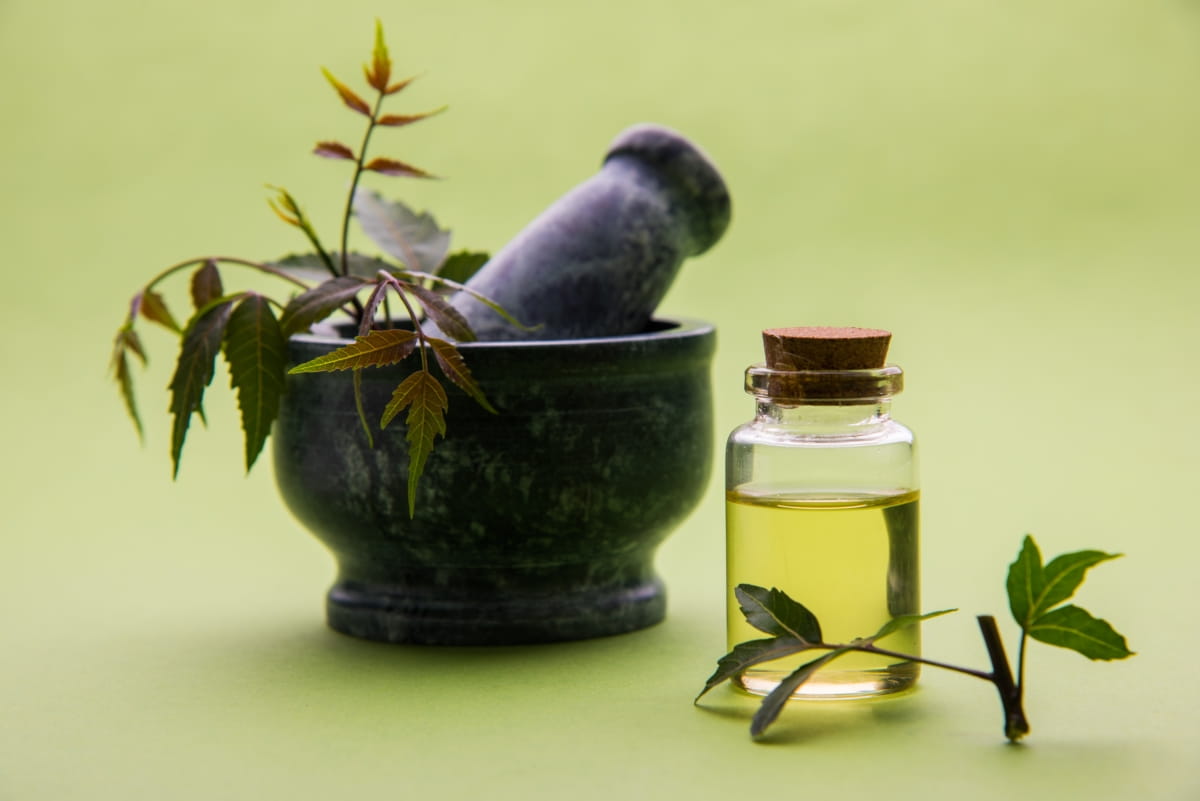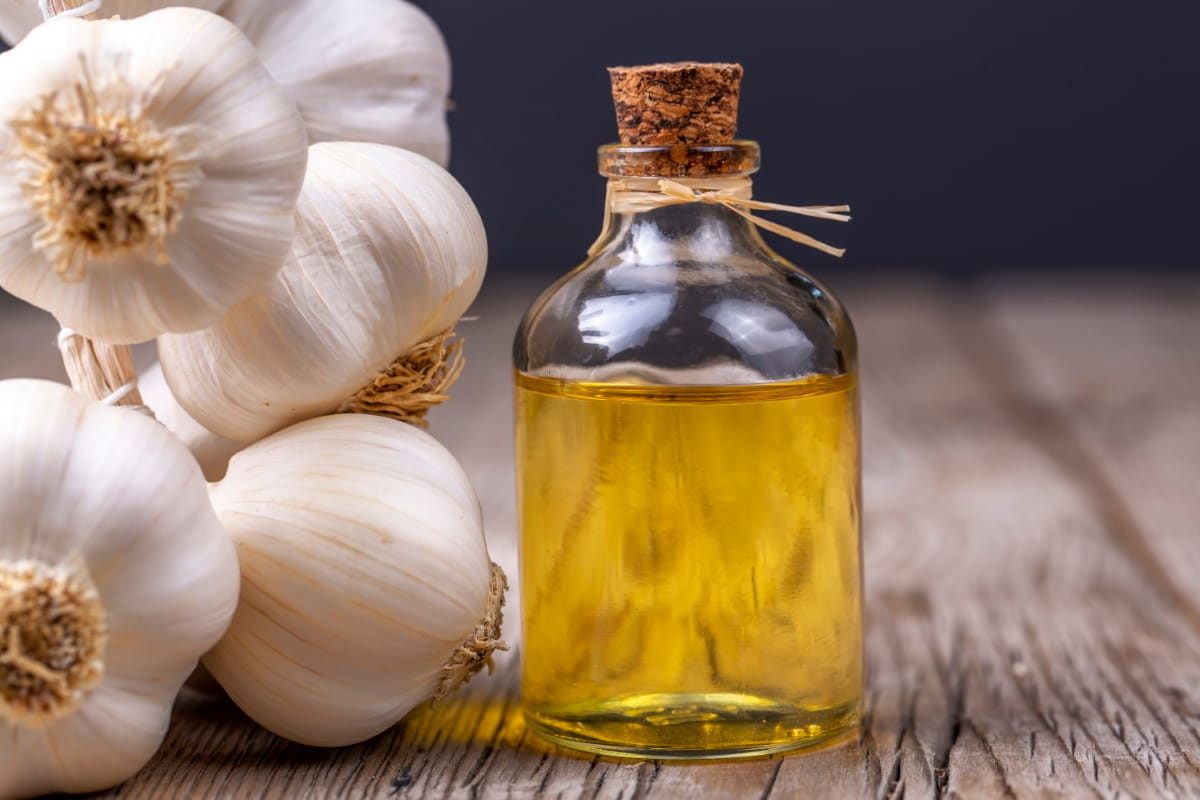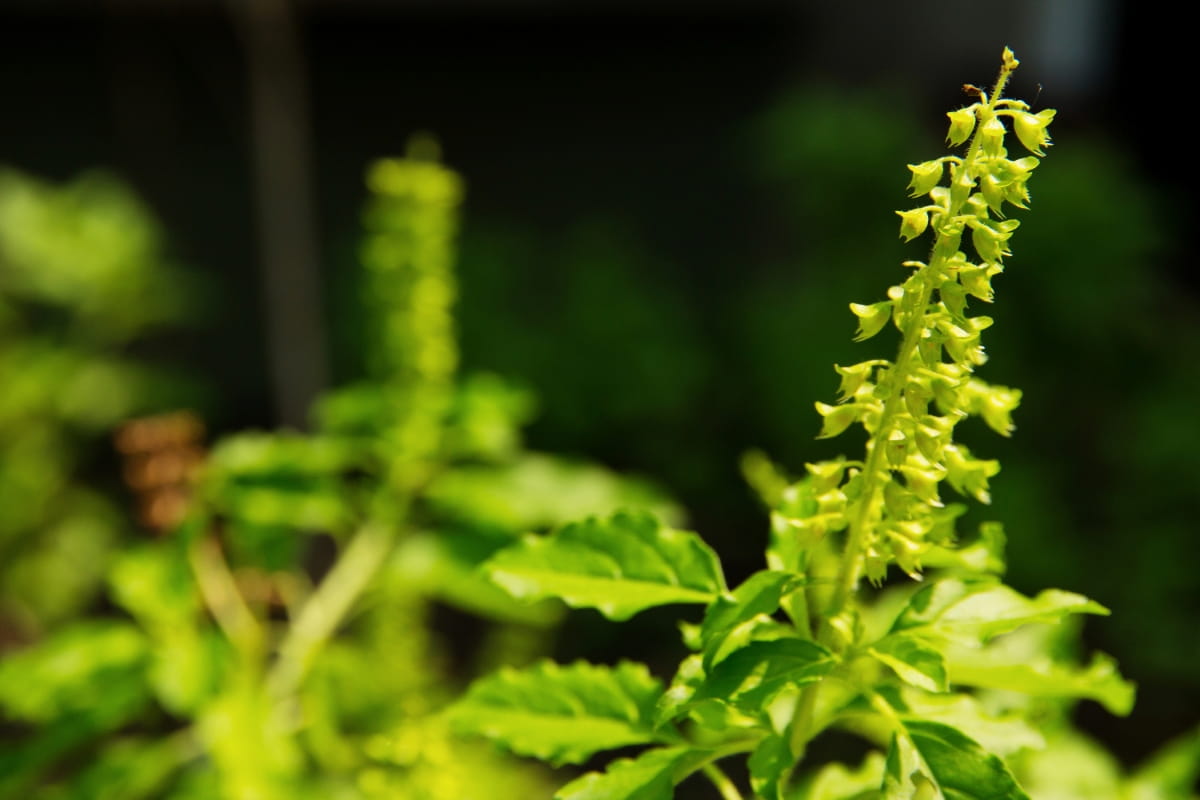Like any other plant, tulsi is susceptible to pest infestations, which can hinder its growth and vitality. While commercial pesticides are readily available, many gardeners prefer to opt for natural and homemade alternatives. In this guide, we’ll explore ten homemade pesticide solutions specifically tailored to combat common pests for Tulsi plant care.
10 Homemade Pesticides for Tulsi
Neem Oil Spray
Ingredients: Neem Oil, Mild Liquid Soap, Water
- Neem oil: A potent natural insecticide that disrupts insect growth and deters feeding.
- Mild liquid soap: Helps the neem oil to adhere to plant surfaces and suffocates soft-bodied pests.
- Water: Serves as a diluent for neem oil and soap, ensuring a safe and effective application.
Usage: Effective Against a Wide Range of Pests
- Mixing: For making Tulsi neem oil pesticide, combine one tablespoon of neem oil with 1/2 teaspoon of mild liquid soap in a spray bottle filled with water.
- Shake Well: Ensure thorough mixing to emulsify the oil and soap.
- Spraying: Spray the solution generously on the tulsi plant, targeting both the upper and lower surfaces of the leaves.
- Repeat: Apply every 7-14 days or as needed, especially after rain or heavy watering.

Soap Spray
Ingredients: Mild Liquid Soap, Water
- Mild liquid soap: Helps the neem oil to adhere to plant surfaces and suffocates soft-bodied pests.
- Water: Serves as a diluent for neem oil and soap, ensuring a safe and effective application.
Usage: Controls Mites, Aphids, Whiteflies, Beetles
- Preparation: As a first step in preparing tulsi plant soap spray, mix 1-2 teaspoons of mild liquid soap with 1 liter of water.
- Application: Spray the solution on the affected parts of the Tulsi plant, covering both the upper and lower surfaces of the leaves.
- Frequency: Apply every 7-10 days or as needed, especially after rainfall or heavy watering.
Soap suffocates and kills mites on contact. The solution disrupts the Aphids and Whiteflies’s respiratory systems, deterring infestation. Beetles are deterred by the soapy residue, reducing their presence on the plant.
Garlic Spray
Ingredients: Garlic, Water, Mild Liquid Soap
- Garlic: Garlic has potent insect-repelling properties that can effectively deter pests from attacking your Tulsi plant.
- Mild liquid soap: Helps the neem oil to adhere to plant surfaces and suffocates soft-bodied pests.
- Water: Serves as a diluent for neem oil and soap, ensuring a safe and effective application.
Usage: Natural Repellent for Many Pests
- For preparing tulsi garlic insect repellent, peel and crush several cloves of garlic. Combine crushed garlic with water in a container.
- Add a few drops of mild soap liquid to the mixture. Allow the mixture to steep for at least 24 hours.
- After steeping, strain and dilute the strained liquid with water, maintaining a 1:5 ratio of garlic mixture to water.
- Apply it generously to the leaves and stems of the Tulsi plant using a spray bottle.
- Repeat application every few days or as needed, especially after rainfall or heavy watering.
In case you missed it: 10 Best Fungicides for Powdery Mildew: 100% Effective Treatment and Control

Chili Pepper Spray
Ingredients: Chili Powder, Water, Mild Liquid Soap
- Chilli Powder: The chili powder acts as a natural deterrent for insects due to its spicy nature.
- Mild liquid soap: Helps the neem oil to adhere to plant surfaces and suffocates soft-bodied pests.
- Water: Serves as a diluent for neem oil and soap, ensuring a safe and effective application.
Usage: Deters Insects and Critters
- In a spray bottle, combine one tablespoon of chili powder with 1 quart of water to prepare tulsi chili pepper spray.
- Add a few drops of mild soap liquid to the mixture. Shake the spray bottle well to ensure thorough mixing.
- Spray the solution on the leaves of the tulsi plant, focusing on areas where insects are present or are likely to gather.
In case you missed it: How to Use Neem Oil on Tulsi Plants: A Natural Way to Get Rid of Bugs and Make it Bushy

Vinegar Spray
Ingredients: Vinegar, Water
- Vinegar: As one of the organic pesticides for tulsi, the acidic properties of vinegar disrupt the pH balance on the surface of pests, ultimately leading to their demise.
- Water: Diluting vinegar with water helps to reduce its acidity, making it safer for the plant.
Usage: Good Against Ants And Aphids
- Water and vinegar should be mixed in equal amounts and transferred into a spray bottle.
- Shake the tulsi vinegar anti-pest solution well and spray it onto the affected parts of the Tulsi plant.
- Effective against ants and aphids, the vinegar spray disrupts the pests’ ability to feed and breed, ultimately reducing their population.
Baking Soda Spray
Ingredients: Baking Soda, Mild Liquid Soap, Water
- Baking Soda: It acts as a pesticide that suffocates and kills various pests. Acts as a fungicide to combat fungal infections.
- Mild Liquid Soap: Helps the solution adhere to the plant’s surface and suffocate pests.
- Water: Serves as the base for the spray and dilutes the other ingredients.
Usage: Helps Fight Fungal Infections
- For tulsi baking soda fungicide, mix one teaspoon of baking soda and a few drops of mild liquid soap into a gallon of water.
- Stir the solution thoroughly until the ingredients are well combined.
- Transfer this mixture into a spray bottle for easy application.
- Spray the solution generously onto the affected areas of the Tulsi plant, covering both the upper and lower surfaces of the leaves.
Milk Spray
Ingredients: Milk, Water
- Milk: Milk contains proteins that act as a natural fungicide, helping to prevent fungal diseases on plants. It also contains lactic acid, which can deter pests and boost the plant’s immune system.
- Water: Water is used as a diluent to ensure that the milk is not too concentrated when applied to the plant.
Usage: Effective Against Powdery Mildew
- Mix equal parts of milk and water. Pour the mixture into a spray bottle. Shake well before use.
- Spray the solution on the affected areas of the tulsi plant, covering both sides of the leaves.
- Apply the milk spray in the morning or late afternoon to prevent the formation of powdery mildew.
Essential Oil Spray
Ingredients: Essential Oils (Peppermint, Rosemary, Tea Tree), Water, Liquid Soap
- Essential Oil Spray for Tulsi: Peppermint, rosemary, and tea tree oils are highly effective against a wide range of pests.
- Water: Acts as a diluent for the essential oils.
- Liquid Soap: Helps the oil and water mix and adhere to the plant’s surface.
Usage: Repels Various Pests and Some Fungi
- Dilute a few drops of all these essential oils with water in a spray bottle.
- Add a small amount of liquid soap to help the solution adhere to the plant’s leaves.
- Shake the bottle well for a thorough mixing of the ingredients.
- Spray the solution generously on the leaves of the tulsi plant, focusing on areas where pests are most likely to reside, such as the undersides of leaves and along stems.
Tobacco Spray
Ingredients: Dry Tobacco, Water
- Dry Tobacco: Obtain dried tobacco leaves or use tobacco dust, readily available in stores.
- Water: Use clean, room temperature water for mixing.
Usage: Targets Pests, Use with Caution
- In a container, mix a handful of dry tobacco with water. Allow it to steep for several hours or overnight, ensuring the water absorbs the tobacco’s properties.
- After steeping, strain the mixture to remove solid particles, obtaining a clear liquid.
- Apply the tobacco spray directly on the affected areas of the Tulsi plant where pests are present.
Beer Trap
Ingredients: Beer
- Beer: Choose a cheap beer and pour it into shallow containers or lids.
Usage: Traps And Drowns Slugs And Snails
- For making tulsi beer slug trap, use lids from jars or any shallow container that slugs and snails can easily crawl into.
- Position the beer traps near the Tulsi plant, focusing on areas where slugs and snails are likely to appear. Make sure the rim of the container is at the soil level for easy access.
- Check the traps regularly and refill with beer as needed. The slugs and snails are attracted to this beer, crawl into the container, and drown.
- Empty the containers filled with drowned pests away from the Tulsi plant to prevent any unpleasant odor.
In case you missed it: Top 10 Homemade Sprays for Cucumber Beetles: Get Rid of These with DIY Organic Treatment

Conclusion
In conclusion, using homemade pesticides for your Tulsi plant is a natural and effective way to rid it of pests without resorting to harmful chemicals. By making use of common household items and natural ingredients, you can protect your plant while also minimizing the impact on the environment and your health.
- Beneficial Insects in Pest Management
- Natural Solutions for Pest Control in Flower Gardens
- Types of Fungicides Used in Agriculture
- Common Issues in the Fruit Development Stage of Pomegranate Farming
- Fruit Development Issues in Papaya: Easy Solutions and Treatment
- Soil-Borne Diseases and How to Protect Your Plants
- Practices to Prevent Disease Spread in the Garden
- From Wilted to Thriving: How to Treat Root Rot Naturally in Houseplants
- Natural Remedies to Cure Brown Spots on Fig Tree Leaves